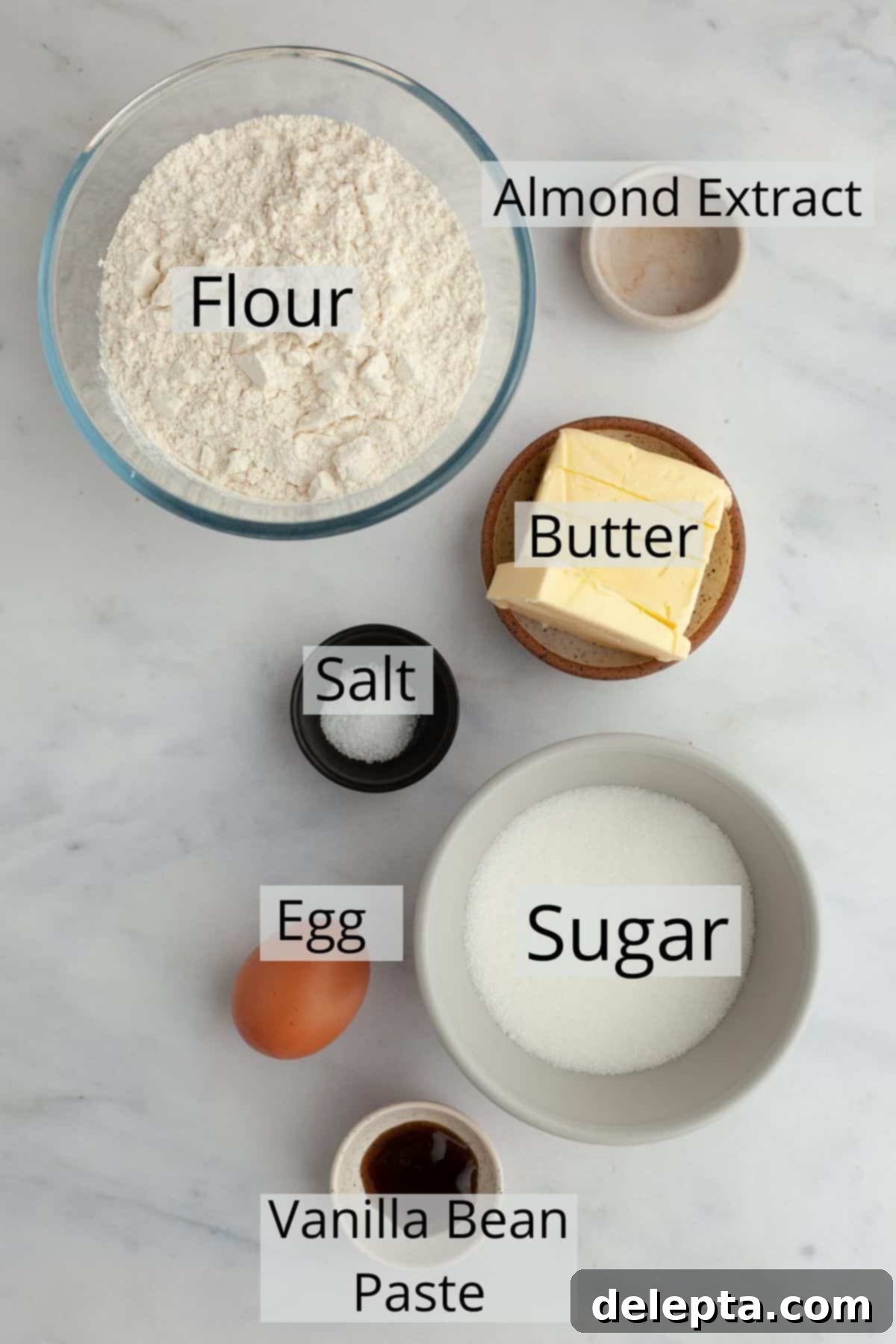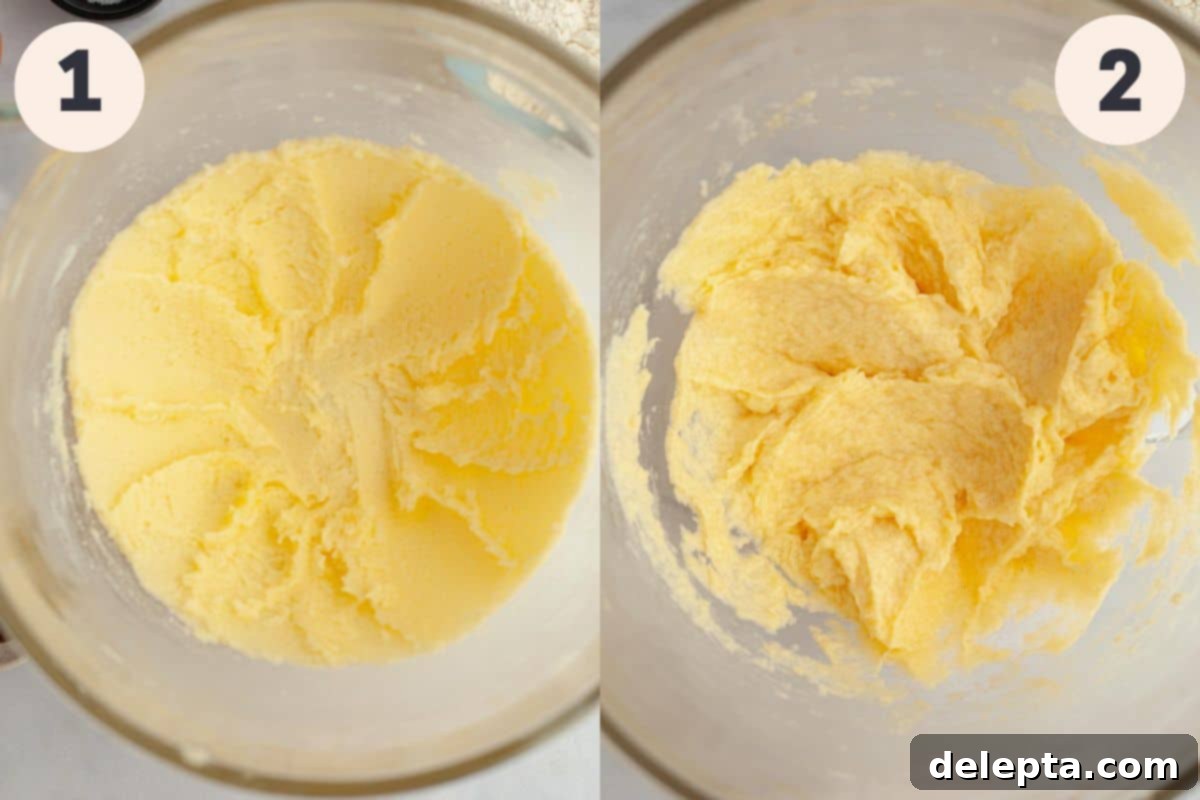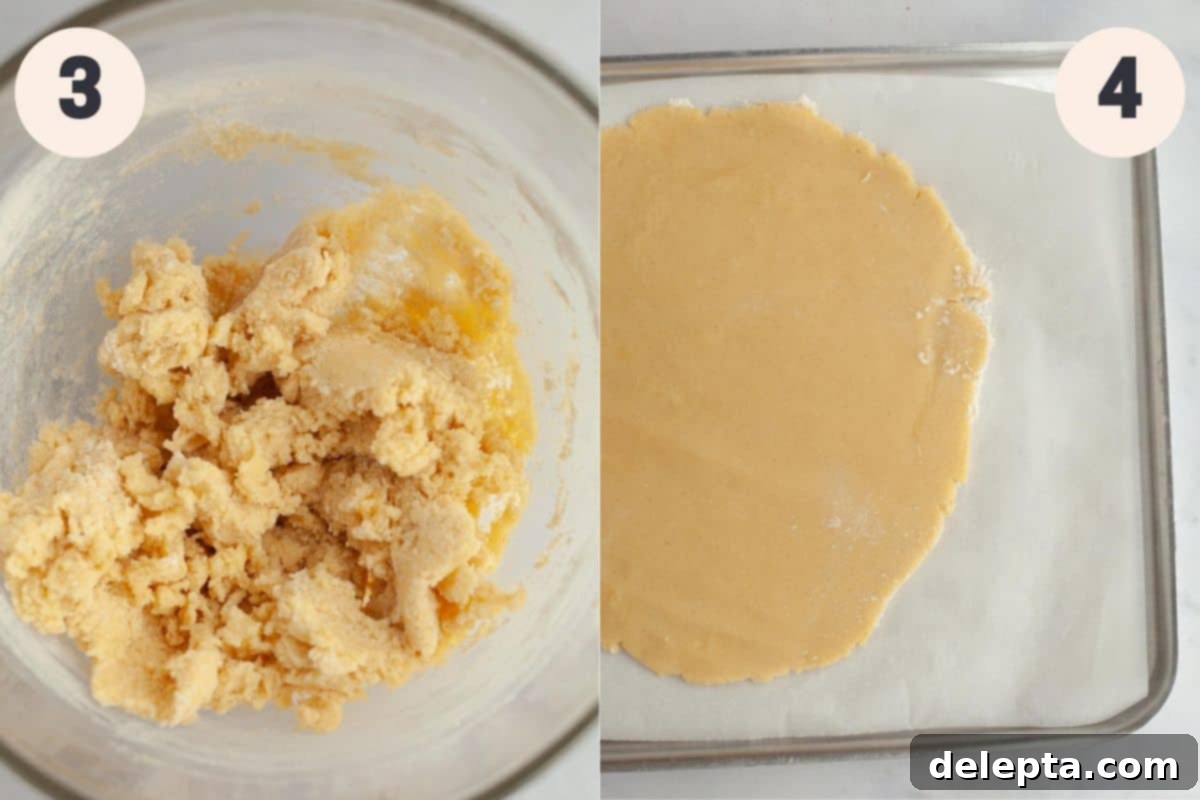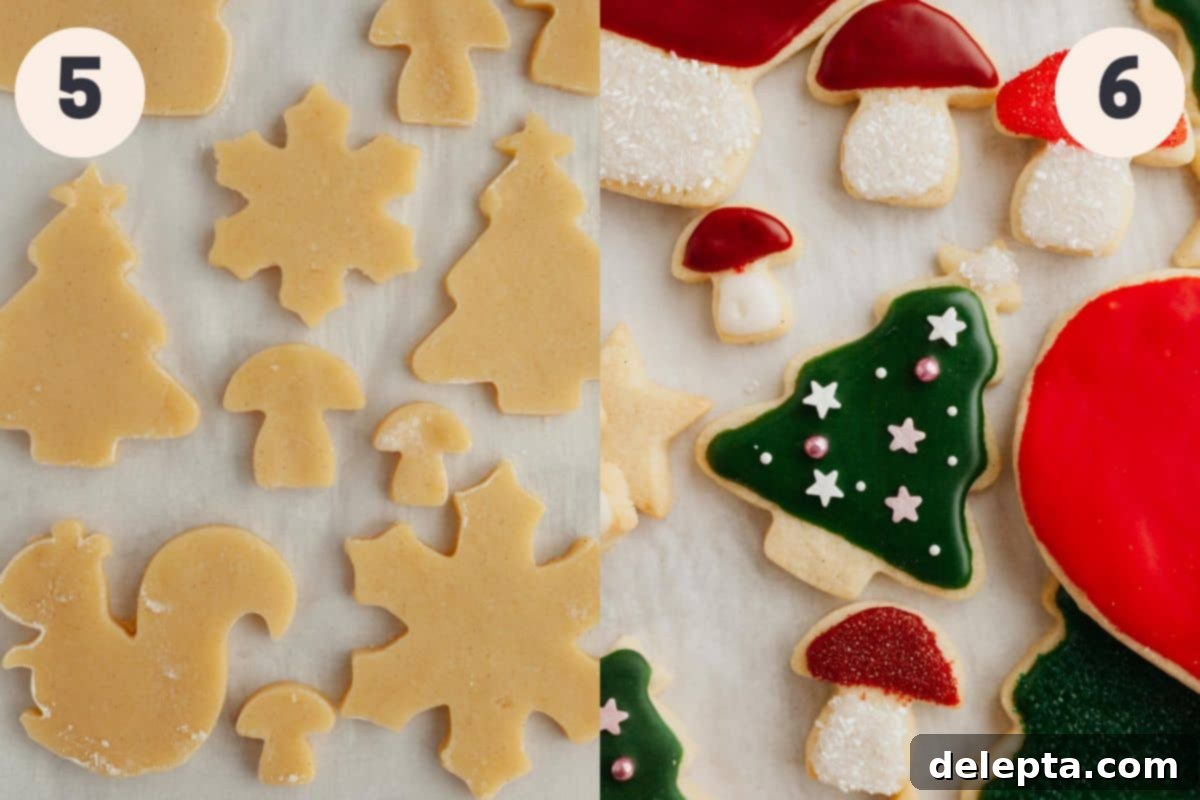Foolproof No-Spread Sugar Cookies: Your Guide to Perfectly Shaped, Deliciously Soft Cut-Outs for Every Occasion
Say goodbye to disappointing, misshapen cookies! These no-spread sugar cookies are truly a game-changer for anyone who loves to bake and decorate. Imagine thick, tender, and wonderfully chewy cookies that maintain their intricate shapes straight out of the oven. Whether you’re preparing for festive holidays like Christmas, celebrating birthdays, or simply enjoying a creative baking session, this recipe ensures stunning results every time. Made effortlessly in just one bowl using readily available pantry ingredients, these cookies are not only simple to prepare but also come with a super easy cookie icing recipe, empowering you to decorate to your heart’s content!

There’s nothing quite as frustrating for a baker as spending precious hours meticulously rolling, cutting, and chilling sugar cookie dough, only to watch your carefully crafted shapes lose their definition and spread into amorphous blobs in the oven. It’s a common baking woe, and one that this recipe expertly avoids! With this foolproof method, you’re guaranteed to achieve those crisp edges and defined shapes that are essential for intricate decorating.
While my mind immediately conjures images of joyful Christmas cookie decorating sessions, these versatile no-spread sugar cookies are perfect for any celebration throughout the year. From themed birthday parties and elegant bridal showers to baby announcements and simple afternoon treats, their ability to hold shape makes them ideal for any cookie cutter design. I personally love experimenting with various festive shapes, and Christmas-themed cutters are always a delight to bring out!
This particular sugar cookie recipe stands out because it consistently delivers perfectly sharp corners and a delightfully soft, chewy texture. During recipe development, I experimented with traditional leavening agents like baking soda and baking powder. However, I quickly discovered that these agents caused the cookies to puff up and spread, compromising the very crisp edges we aim for. The secret to these no-spread wonders lies in omitting leavening agents altogether, ensuring they bake up beautifully flat and retain their intended form.
If you’re a fan of the classic Lofthouse-style sugar cookie, known for its cakey texture and generous frosting, you might also enjoy my buttercream frosted cookies. They offer a different but equally delicious experience for those who love a softer, fluffier cookie base.
Looking for more holiday baking inspiration? Be sure to explore some of my other popular festive recipes. Dive into the cozy flavors of gingerbread cookies without molasses (perfect for those who prefer a milder spice), discover the vibrant Christmas sprinkle sugar cookies, or try your hand at elegant cutout shortbread cookies. And for chocolate lovers, don’t miss these delightful cocoa blossom cookies! If your baking plans include a grand Christmas cookie exchange, please consider this your official invitation to invite me – I’d love to sample your creations!
Why These No-Spread Sugar Cookies Are My Absolute Favorite
There are many reasons why this recipe has become a staple in my kitchen, especially during the holidays. It truly simplifies the baking process while delivering exceptional results:
- The cookies require just 7 core ingredients, most of which you likely already have stocked in your pantry. This makes them incredibly accessible and convenient for spontaneous baking sessions or last-minute holiday preparations.
- I’ve opted for premium vanilla bean paste in this recipe to infuse these sugar cookies with an incredibly rich, deep vanilla flavor that truly elevates them. While you can certainly use regular vanilla extract if that’s what you have on hand, the paste adds a special gourmet touch and visible flecks of vanilla bean for a beautiful aesthetic.
- A key feature of these sugar cookies is that they do not use any leavening agent, such as baking soda or baking powder. This deliberate omission is precisely why they don’t puff up or spread during baking, ensuring they flawlessly maintain their intricate cut-out shapes. No more distorted gingerbread men or melted snowflakes!
- Accompanying this recipe is a super simple cookie icing that comes together in just one bowl and takes only about 5 minutes to prepare. This thick, shiny, and delicious icing is perfect for decorating, providing a smooth canvas for all your creative designs and setting beautifully for easy stacking and gifting.
Essential Ingredients for Perfect No-Spread Sugar Cookies
Creating these perfect cut-out sugar cookies requires just a handful of common ingredients. Here’s a closer look at what you’ll need and why each component is important:

- All-Purpose Flour: This forms the structural backbone of our cookies. I have exclusively tested this recipe with all-purpose flour, which is also known as regular plain flour in many parts of Europe. It’s crucial to measure your flour accurately, preferably by weight, to ensure the right dough consistency and prevent dry, crumbly cookies.
- Unsalted Butter: Room temperature unsalted butter is vital for proper creaming with sugar, which incorporates air and contributes to the cookie’s tender texture. Using unsalted butter allows you to control the total salt content in the recipe.
- Granulated Sugar: Beyond sweetness, sugar plays a key role in tenderizing the dough and promoting that lovely golden-brown edge during baking. When creamed with butter, it also creates air pockets for a lighter crumb.
- Large Egg: The egg acts as a binder, helping to hold the dough together and providing richness and moisture. Ensure it’s at room temperature for better emulsification with the butter mixture.
- Vanilla Bean Paste: As mentioned, this is my preferred choice for an intensely rich vanilla flavor and beautiful speckles. However, if vanilla bean paste isn’t available, a good quality vanilla extract can be used as a direct substitute. Given the simplicity of the ingredient list, the quality of your vanilla truly shines through.
- Almond Extract: This ingredient is entirely optional but highly recommended! Just a quarter teaspoon adds a subtle, sophisticated depth of flavor that complements the vanilla beautifully without making the cookies taste overtly almond-like. It’s a secret weapon for an extra special touch.
- Kosher Salt: Salt balances the sweetness and enhances all the other flavors in the cookie. I use kosher salt in my recipes; if you’re using fine table salt, you’ll want to halve the amount as it’s more potent by volume.
- Light Corn Syrup (for the icing): While not included in the cookie dough itself, light corn syrup is a star ingredient for the accompanying icing. It’s the secret to achieving that beautiful, glossy sheen and helps prevent the icing from becoming too brittle or powdery once dry.
Detailed Step-by-Step Instructions for No-Spread Sugar Cookies
Follow these precise steps to ensure your no-spread sugar cookies turn out perfectly every time:

Step 1: Cream Butter and Sugar. In a stand mixer equipped with the paddle attachment, or using a large bowl and a handheld mixer, combine the softened unsalted butter and granulated sugar. Beat on medium-high speed for 2 to 3 minutes until the mixture transforms into a noticeably paler, light, and fluffy consistency. This creaming process incorporates air, which is crucial for the cookies’ tender crumb.
Step 2: Incorporate Wet Ingredients. Add the room temperature egg, vanilla bean paste (or extract), and the optional almond extract to the creamed mixture. Mix briefly on low speed until just combined. Be careful not to overmix at this stage.

Step 3: Add Dry Ingredients. Gently add the all-purpose flour and kosher salt to the bowl. Mix on the lowest speed possible until just combined. The moment you no longer see streaks of dry flour, stop mixing immediately. Overmixing the flour can develop gluten, leading to tough cookies. Divide the dough into two equal portions.
Step 4: Roll and Chill the Dough. Prepare your workstation by laying out two separate pieces of parchment paper on your counter. Place one portion of dough onto each piece of parchment. Lightly dust the dough and your rolling pin with a little extra flour to prevent sticking. Roll out each dough portion evenly until it is approximately ¼ inch (about 6mm) thick. If the dough begins to stick to the rolling pin, simply sprinkle a little more flour as needed. Once rolled, carefully transfer one piece of parchment-lined dough onto a baking sheet, then place the second rolled-out dough (still on its parchment) directly on top. Chill this stacked dough in the refrigerator for at least 1 hour. This chilling step is absolutely critical for preventing the cookies from spreading.

Step 5: Cut and Chill Again. Remove the baking sheet with the chilled dough from the fridge. Carefully lift off the top sheet of dough (with its parchment) and place it on your counter. Lightly flour your chosen cookie cutters and begin cutting out your desired shapes. Arrange these cut-out cookies on the parchment paper, ensuring they are evenly spaced and not touching each other. Gather any dough scraps, gently re-roll them, and cut out more shapes until all the dough is used. Repeat this process with the second sheet of rolled-out dough. Once all cookies are cut and arranged on parchment-lined baking sheets, place them back into the fridge for another 30 to 60 minutes. This second chill is key to locking in those perfect shapes. While they chill, preheat your oven to 350°Fahrenheit (175°Celsius).
Step 6: Bake the Cookies. Bake the cookies one baking sheet at a time to ensure even heat distribution. Baking time will range from 8 to 12 minutes, depending on the size and thickness of your cookies. Larger shapes, like the mittens pictured, might require up to 12 minutes, while smaller, more delicate designs such as snowflakes or toadstools may be done in as little as 8 minutes. The cookies should be pale in color with only slightly golden-brown edges. Remove them from the oven and let them cool on the baking sheet for about 10 minutes before carefully transferring them to a wire rack to cool completely. They must be fully cooled before decorating.
Making the Easy Cookie Icing:
This simple cookie icing is perfect for decorating. To prepare it, whisk together all the icing ingredients (confectioners’ sugar, vanilla extract, corn syrup, and water) in a large bowl. It will initially be quite thick, almost paste-like, requiring some effort to combine. Continue whisking until it becomes completely smooth and develops a beautiful shine. To test for readiness, lift your whisk above the bowl and let the icing drip back down; the ribbons formed should hold their shape for approximately 5 seconds before slowly melting back into the rest of the icing. If it’s too firm, add a tiny bit more water (½ teaspoon at a time) until the desired consistency is achieved. If using food gel colors, separate the icing into smaller bowls and mix in a few drops of your desired colors until uniform.

Creative Ways to Decorate Your Perfect No-Spread Sugar Cookies
Decorating sugar cookies is where the magic truly happens! With your perfectly shaped no-spread cookies as a canvas, here are my top tips for achieving beautiful, professional-looking designs:
- The absolute first tip is to ensure your icing is at the correct consistency. It should be thick enough to hold its shape when piped, yet fluid enough to self-level smoothly. If it’s too thin, it will run off the cookies; too thick, and it will be difficult to pipe and spread. The “5-second rule” mentioned in the icing instructions is your best guide!
- If you wish to dye the icing vibrant colors, divide it into several small bowls. Add just a few drops of high-quality food gel coloring (gel colors are much more concentrated and won’t thin your icing as liquid colors can). Whisk each bowl until the color is fully incorporated and uniform.
- For precise piping and outlining, I highly recommend using a small, round piping tip like Wilton Tip 4 or Tip 5. These sizes allow for fine detail work and clean lines.
- To create a polished look, always outline the cookie first with a steady hand. Once the outline is complete, immediately fill in the center with random squiggles of icing. Use a toothpick or a small scribe tool to gently nudge the icing into place, spreading it evenly to the edges and popping any air bubbles for a smooth finish. This technique is known as “flooding.”
- Get creative with various toppings! Use classic nonpareils, fun sprinkles, or sparkling sanding sugar to add texture and visual appeal. For a cookie that is completely covered in sanding sugar (or a specific section), fill a shallow bowl with the sugar and gently dip the freshly iced cookie (or section) into it before the icing sets.
- For more intricate designs, where you want to apply sanding sugar only to certain sections of a cookie (like the white cuff on the red mitten cookie pictured above!), ice that specific section first. Immediately dip that iced part into the sanding sugar. Once that’s done, you can then proceed to ice the remaining parts of the cookie with different colors or designs, allowing each section to set as you go.

My Essential Tips for Baking and Decorating the Best Sugar Cookies
Achieving bakery-quality sugar cookies isn’t just about the recipe; it’s also about technique. Here are my tried-and-true tips to elevate your cookie-making experience:
- Accurate Measuring is Key: This is arguably the most crucial tip for consistent baking results. I cannot stress enough the importance of using a reliable digital kitchen scale and measuring your ingredients in metric grams. Volume measurements (like cups) can be highly inaccurate due to variations in how ingredients are packed. Especially with flour, too much can lead to dry, crumbly dough that’s hard to work with, while too little can result in a sticky mess. Precise measurement ensures the perfect dough consistency for no-spread cookies.
- Don’t Skip the Chilling Time: The chilling steps in this recipe are non-negotiable for achieving cookies that truly hold their shape. Chilling allows the butter in the dough to firm up, preventing it from melting too quickly in the oven and causing the cookies to spread. It also gives the gluten in the flour a chance to relax, making the dough easier to handle and less prone to shrinking. Be patient – it’s worth the wait!
- Tinting the Dough with Food Coloring: If you desire to make colorful cookie dough, my absolute favorite food gel brand is Americolor. Unlike liquid food colorings, gel colors are highly concentrated, meaning you only need a tiny amount to achieve vibrant hues without altering the dough’s consistency. I’ve had great success with shades like laurel (green), maroon (deep red), and tulip red (bright red) for festive designs.
- Allow the Icing to Fully Set: After decorating, it’s vital to give your icing ample time to set and harden. Arrange the decorated cookies in a single layer on a baking tray or wire rack, ensuring they are well-spaced to prevent smudging. While I’ve found that my icing typically sets within 6 hours, for ultimate firmness, especially if you plan to stack or package them, waiting up to 24 hours is highly recommended.
- Plan Ahead with Make-Ahead Options: This recipe is wonderfully adaptable for advance preparation, making holiday baking less stressful. You have a few great options:
- Dough Ahead: You can prepare the cookie dough a few days in advance and store it tightly wrapped in plastic wrap in the refrigerator. Just let it soften slightly at room temperature before rolling.
- Baked Cookies Ahead: Bake the cookies as directed, let them cool completely, and then store them undecorated in an airtight container at room temperature for up to a week. They can also be frozen for up to 3 months; thaw completely before decorating.
- Decorated Cookies Ahead: Once decorated and the icing is fully set, store the cookies in an airtight container between layers of parchment paper. They will stay fresh and beautiful for several days.

Discover More Festive Christmas Cookie Recipes!
If you’ve enjoyed making these no-spread sugar cookies and are eager to continue your holiday baking adventure, here are a few more delightful Christmas cookie recipes you’ll love:
- Cream Cheese Spritz Cookies
- Classic Thumbprint Hershey Kiss Cookies
- German Gingerbread Cookies
- Peppermint Bark Cookies
If you’ve whipped up a batch of these fantastic no-spread sugar cookies, I would absolutely love to hear from you! Please make sure to leave a ⭐️ rating and a thoughtful review below to share your experience. Your feedback helps other bakers, and it brightens my day to see your wonderful creations. Don’t forget to tag me on Instagram @alpineella so I can admire your decorated masterpieces! You can also stay connected and discover more delicious recipes by following along on Pinterest, Facebook, and TikTok. Happy baking!
Recipe Card: No-Spread Sugar Cookies

No-Spread Sugar Cookies
Ella Gilbert
Pin Recipe
Save Recipe
Saved!
25 minutes
10 minutes
2 hours
2 hours
35 minutes
Dessert
American
25
cookies
127
kcal
Ingredients
No-Spread Sugar Cookies
-
1 ½
sticks
unsalted butter
room temperature -
¾
cup
granulated sugar -
1
large
egg
room temperature -
½
tablespoon
vanilla bean paste
can use extract instead -
¼
teaspoon
almond extract
optional -
½
teaspoon
kosher salt -
2 ½
cups
all purpose flour
Cookie Icing
-
2
cups
confectioners’ sugar
sifted -
1
teaspoon
vanilla extract -
2
tablespoons
corn syrup -
2 ½
tablespoons
water
Instructions
Make the No-Spread Sugar Cookies
-
In a stand mixer fitted with the paddle attachment, or in a large bowl with a hand mixer, beat the room temperature unsalted butter and granulated sugar together on medium-high speed for 2-3 minutes. The mixture should become visibly paler, light, and fluffy, indicating proper aeration.1 ½ sticks unsalted butter,
¾ cup granulated sugar -
Add the large egg, vanilla bean paste (or extract), and the almond extract (if using). Mix briefly on low speed, just until these wet ingredients are fully combined into the butter mixture. Be careful not to overmix.1 large egg,
½ tablespoon vanilla bean paste,
¼ teaspoon almond extract -
Gradually pour in the all-purpose flour and kosher salt. Mix on your lowest speed, stopping immediately as soon as there are no more visible streaks of dry flour. Overmixing will lead to tough cookies. Divide the finished dough into two equal portions.2 ½ cups all purpose flour,
½ teaspoon kosher salt -
Lay two separate pieces of parchment paper on your counter. Place one portion of dough onto the center of one piece of parchment paper and lightly sprinkle it with extra flour. Using a lightly floured rolling pin, roll out the dough directly on the parchment until it is uniformly ¼ inch (about 6mm) thick. If the dough starts to stick, sprinkle a little more flour on top. Repeat this process with the second piece of dough and parchment paper.
-
Carefully place one parchment-covered dough sheet onto a baking sheet, then gently place the second parchment-covered dough sheet directly on top. Transfer this stacked dough to the refrigerator and chill for at least 1 hour. This initial chill is crucial for dough manageability and preventing spread.
-
Retrieve the cookie sheet with the chilled dough from the fridge. Take the top rolled-out piece of dough (still on its parchment paper) and place it on your counter. Lightly flour your cookie cutters and cut out your desired shapes. Carefully transfer these cut-out cookies back onto the parchment paper, ensuring they are evenly spaced and not touching. Gather any leftover dough scraps, gently re-roll them, and cut out additional cookies until all dough is used. Repeat this cutting process with the other rolled-out piece of dough.
-
Once all cookies are cut and arranged on parchment-lined baking sheets, stack the two pieces of parchment paper with the cookies (carefully!) back onto the original cookie sheet, or use a second cookie sheet if preferred. Chill these cut-out cookies for another 30-60 minutes. This second chill ensures the shapes are perfectly set before baking.
-
While the cut-out cookies are chilling for their second round, preheat your oven to 350°Fahrenheit (175°Celsius). Ensure your oven is fully preheated for even baking.
-
Bake the cookies one baking sheet at a time for 8-12 minutes. The exact baking time will vary based on the size and thickness of your cookie cutters; larger cookies may need closer to 12 minutes, while smaller ones might only require 8 minutes. The cookies should remain pale in color with just a hint of light golden-brown around the edges. Remove them from the oven and let them cool on the baking sheet for 10 minutes before carefully transferring them to a wire rack to cool completely. They must be fully cool before decorating to prevent melting the icing.
Make and Apply Cookie Icing
-
In a large bowl, whisk together the sifted confectioners’ sugar, vanilla extract, light corn syrup, and water. Sifting your confectioners’ sugar is paramount to avoid a lumpy icing!2 cups confectioners’ sugar,
1 teaspoon vanilla extract,
2 tablespoons corn syrup,
2 ½ tablespoons water -
Whisk vigorously until the mixture is completely smooth and shiny. Initially, it will be very thick and paste-like, requiring a bit of “elbow grease” to combine. It will gradually loosen up. The icing is ready when you lift the whisk and allow ribbons of icing to drip back into the bowl; these ribbons should hold their shape for at least 5 seconds before gently melting back into the main consistency. If the icing is still too stiff, add water in 1-teaspoon increments until the desired flow consistency is reached.
-
If you plan on using food gel coloring, separate the icing into smaller bowls, adding just a few drops of your desired food gel to each and mixing until the color is uniform.
-
Once your cookies are completely cooled, transfer the icing into piping bags. I personally find Wilton Tip 4 or 5 ideal for decorating these cookies. For a clean finish, I recommend outlining the cookies first, then filling in the center with random squiggles (flooding). Use a toothpick or scribe to gently nudge the icing to the edges and smooth out any imperfections. Add sprinkles, nonpareils, or sanding sugar immediately after icing each section, before it sets. To apply sanding sugar to specific parts of a cookie (like the white cuff on the red mitten cookie), ice that particular section first, then dip it into the sanding sugar before the icing sets. Once that section is done, you can proceed to ice and decorate the rest of the cookie.
-
Carefully place the decorated cookies back onto a parchment-lined cookie sheet, ensuring they are not touching, to allow the icing to set. I’ve found that the icing typically sets within 6 hours, but for maximum firmness and to prevent any potential smudging, you might consider letting them set for up to 24 hours.
Video
Notes
My recipes have been developed and tested in metric grams. I highly recommend using a weighing scale and measuring out your ingredients the metric way, as it provides the most accurate and consistent results. While US cup conversions are provided, please note that I haven’t specifically tested the recipe using these volume measurements.
Butter: For the best flavor and texture, I use European-style butter, such as Kerrygold, in my recipes. This type of butter has a higher fat content, which contributes to a much creamier and richer finished bake.
Salt: This recipe specifies kosher salt. If you don’t have kosher salt on hand and opt for fine table salt, please remember to halve the amount called for in the recipe, as fine salt is much more concentrated by volume. For reference, 1 teaspoon of Diamond Kosher salt (which I use) is roughly equivalent to ½ teaspoon of fine salt. Avoid coarse kosher salt unless you specifically know the conversion for baking.
Corn Syrup: The light corn syrup used in the icing is essential for giving it that beautiful, smooth shine and helps it set without becoming brittle.
Vanilla Bean Paste: For an intense vanilla flavor and lovely visual specks, vanilla bean paste is recommended. However, a good quality vanilla extract can be used as a direct substitute if preferred.
Almond Extract: This ingredient is optional but highly recommended as it imparts a subtle, delicious taste that elevates the cookies’ overall flavor profile without being overpowering.
Number of cookies: The yield of this recipe is approximate and will depend significantly on the size of the cookie cutters you choose to use. The estimate of 25 cookies is provided as a general guide.
Food Gel: For vibrant and rich colors in your icing, I consistently use Americolor food gel. The specific shades utilized in the photos are laurel (green), maroon (deep red), and tulip red (bright red).
Sprinkles: The festive sprinkles featured in the images are a combination from Sweetapolita, along with classic sanding sugar sourced from Target.
Nutrition
Calories:
127
kcal
Carbohydrates:
27
g
Protein:
2
g
Fat:
6
g
Saturated Fat:
4
g
Polyunsaturated Fat:
0.3
g
Monounsaturated Fat:
2
g
Trans Fat:
0.2
g
Cholesterol:
22
mg
Sodium:
52
mg
Potassium:
18
mg
Fiber:
0.3
g
Sugar:
8
g
Vitamin A:
180
IU
Calcium:
5
mg
Iron:
1
mg
